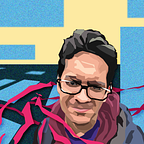Why Design Affects How We Talk
Why do internet arguments get nowhere? Why does no one ever seem to switch sides? Why must every topic be defined with sides?
As part of the Grand Challenges program at Georgia Tech, I’ve been researching why the state of public discourse is so toxic. If we want to progress as a society and solve the grand challenges of the nation and the world, we need to solve this challenge first, and then talk about the rest.
It’s easy to put the blame on social media — not because it created these problems, but because it allows them to propagate at an unstoppable rate. But why though? On a site like Medium, we spend time reading creative, thought-out, and long articles. Reddit threads are long. YouTube videos are only monetized if they are at least 10 minutes long. Every platform tries to maximize the quantity of its content. Then how do we manage to get through such a thick stream of content so fast?
It’s not just “the algorithm.” Simply because we are given the tools to simply skim the surface off each item of content in the stream. We see the stream from the surface, and choose where to dive in. Most content is ignored. But what are we actually skimming? It depends on the platform — an unspecific, sensational headline, a profile pic, a heavily-edited thumbnail. And each of these surface items is designed not to spread information, but to get you to dive in. First impressions last forever. And if there is not much under the surface either, perhaps only 140 characters or a single filtered photo, our sense of the big picture is summarized in just those few pixels. When the platform makes money off of clicks instead of intellectual value (how do you even measure or monetize intellectual value?), then the surface content is all that matters, and the design points you there.
A bag of chips, for example. Colorful, warm and friendly, puffed up to the brim, and once you make your purchase, it’s only a third full. Now how about social media? Instead of a colorful bag, you have UI.
Big, colorful images.
Fancy new redesigns with welcoming round corners.
A marketable palette of colors.
Big hearts and share buttons.
No way to really look inside without making your click, your purchase. How likely are you really to purchase every bag of chips you see? You choose one, or none.
If headlines, blurbs, and images define what we look at, 99% of what we look at will be those headlines, blurbs, and images. And if that’s how modern communication looks to us on-screen, if that’s how we learn to communicate to get the most people to listen to us, then no wonder it bleeds so easily into reality, especially when the internet tries to recapture reality and share it down the stream again. How information is presented affects how we communicate.
Whether you design your own UI or just use others’, consider the way you communicate with it. If online communication is to ever be transformed, UI is likely where we should start.
If you want to talk further about this, leave a comment!
